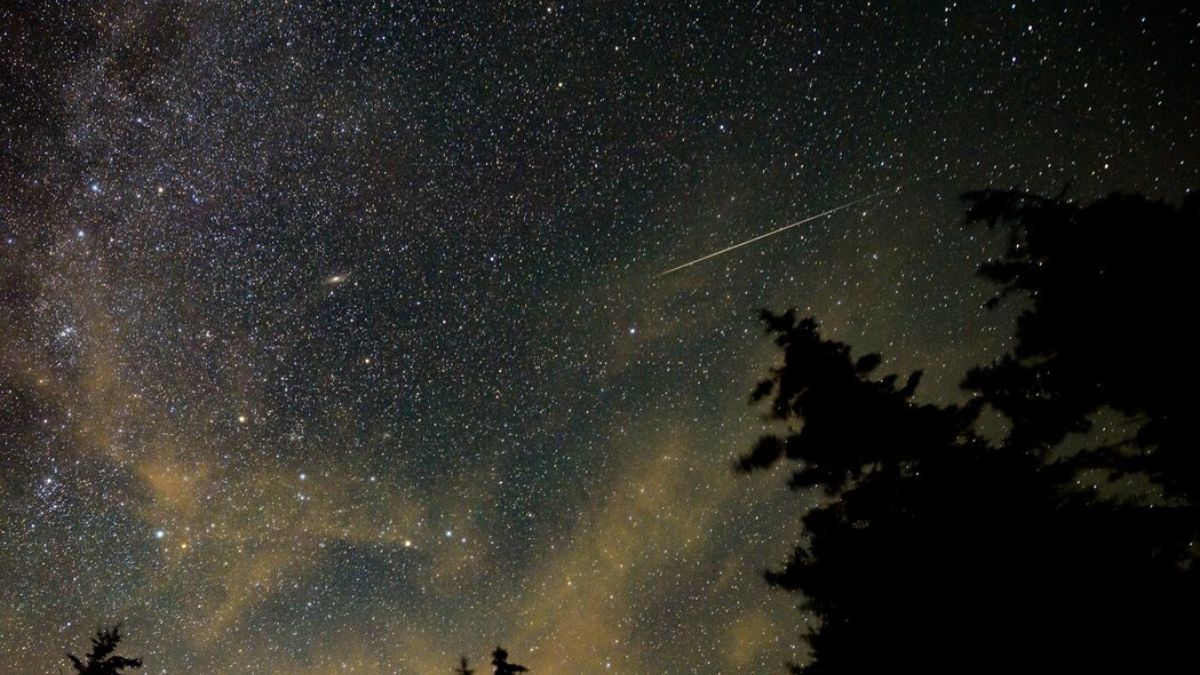Nasa’s Double Asteroid Redirection Test (DART) mission, which intentionally crashed into the asteroid Dimorphos in 2022, might lead to the first human-made meteor shower.
The collision, part of a planetary defense strategy, has resulted in debris that could eventually reach Earth and Mars, creating a potential meteor shower known as the Dimorphids.
Nasa’s DART mission marked a significant achievement in human history by successfully altering the orbit of a celestial body for the first time.
What was the mission about?
The mission, designed to test asteroid deflection technology, targeted the tiny asteroid Dimorphos, a moonlet orbiting the larger asteroid Didymos.
By crashing a spacecraft into Dimorphos at a staggering speed of 13,645 miles per hour (6.1 kilometers per second), Nasa aimed to assess whether such a kinetic impact could effectively change the motion of a potentially hazardous asteroid.
The experiment was a success. Ground-based telescopes confirmed that DART had altered Dimorphos’ orbital period around Didymos by 32 to 33 minutes.
However, the collision also generated a significant amount of debris — over 2 million pounds (nearly 1 million kilograms) of rocky material. This debris, blasted into space, has raised intriguing possibilities about its future trajectory and its potential to create a meteor shower.
Could Dimorphos fragments reach Earth and Mars?
New research indicates that the debris from the DART impact could arrive in the vicinity of Earth and Mars within the next few decades. According to a study accepted by the Planetary Science Journal, some fragments might reach Mars as soon as seven years from now, while others could reach Earth’s atmosphere within ten years.
Impact Shorts
More ShortsCNN quoted the study’s lead author, Eloy Peña Asensio, a postdoctoral researcher at Italy’s Polytechnic University of Milan, who explained, “This material could produce visible meteors, commonly called shooting stars, as they penetrate the Martian atmosphere.”
The particles range in size from tiny grains of sand to fragments as large as smartphones. Although none of these fragments pose a risk to Earth, they could create a visible meteor shower, which would be particularly unique given its human-made origin.
Peña Asensio stated that while the debris is unlikely to reach Earth’s surface, its potential to create a meteor shower is a fascinating possibility. “Once the first particles reach Mars or Earth, they could continue to arrive intermittently and periodically for at least the next 100 years, which is the duration of our calculations,” he said.
When will the meteor shower occur?
Predicting the exact timing and impact of the debris on Earth and Mars is complex and depends on various factors, including the velocity and trajectory of the fragments. The research team utilised data from the LICIACube satellite — a small companion to the DART spacecraft that captured crucial footage of the collision and the resulting debris cloud — to simulate the paths of 3 million particles across the solar system.
These simulations, conducted using the supercomputing facilities of the Consortium of University Services of Catalonia, revealed that faster-moving particles, traveling at speeds of up to 3,579 miles per hour (1,600 meters per second), could reach Earth in less than a decade.
While the possibility of a Dimorphids meteor shower reaching Earth is considered unlikely, it cannot be entirely ruled out. If it does occur, it would be a small, faint meteor shower, primarily visible from the southern hemisphere and peaking in May.
“The resulting meteor shower would be easily identifiable on Earth, as it would not coincide with any known meteor showers,” Peña Asensio noted.
The study also hinted at the possibility of the debris reaching other celestial bodies, including nearby asteroids.
Coauthor Michael Küppers, a planetary scientist at the European Space Astronomy Centre, remarked on the unexpected trajectory of the debris, telling CNN, “Personally, initially I was surprised to see that, although the impact happened close to Earth (at about an 11-million-kilometer distance), it is easier for the impact ejecta to reach Mars than to reach Earth.”
What’s next?
The Hera mission, led by the European Space Agency, is set to launch in October and will reach the Didymos-Dimorphos system by late 2026. This mission will provide further insights into the aftermath of the DART impact, including a detailed analysis of the debris, its composition, and how the impact has reshaped Dimorphos.
“Is there an impact crater, or was the impact so large that Dimorphos was globally reshaped?” Küppers told CNN, who is also a project scientist for the Hera mission. “From ground-based data, we have some evidence for the latter. Hera will tell us for sure.”
Also Watch:
Future observations and missions will play a crucial role in refining our understanding of the debris and its potential to create a meteor shower. As Peña Asensio stated, “In any case, whether the DART impact has launched Dimorphos particles at velocities high enough to reach Earth will be determined in the coming decades through meteor observation campaigns. If it does happen, we may witness the first human-made meteor shower.”
)